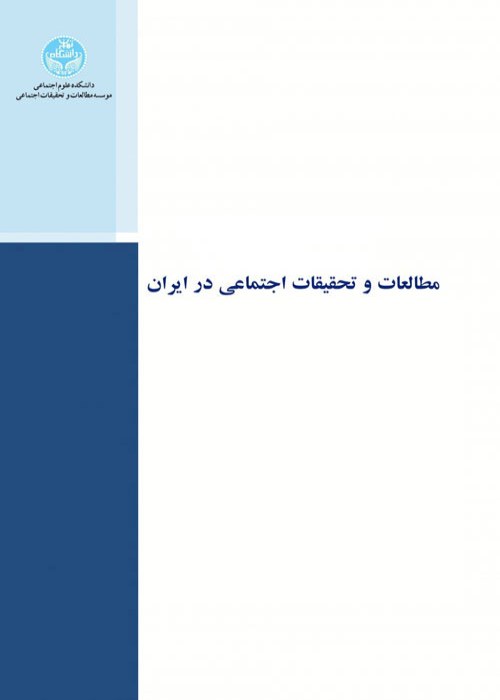Dynamics of Development programs in Iran post Islamic Revolution
Author(s):
Abstract:
Development programs formulated in order to influence and create change and improvement in people's lives, that entails the promotion of resources, opportunities and capabilities different sections of the population, as well as an improvement in the standards and quality of life. They are based on policies that presented in form concrete objectives and articles program. This policies and objectives are basis for projects and so a mechanism that allows the realization of the desires of program and improvement in social life. The with design dynamics programs development, the first thing that reminder in mind is this fact that we are faced with a process. Dynamics of development programs not only makes us aware of the dynamics within each program but also understand the conditions and factors that create the dynamics in the external environment applications are possible. In this essay tries to explore and express the dynamics experienced in development plans in Iran after the Islamic Revolution. The questions are: Formation dynamics programs and How this dynamic process in the form of five programs have been pursued after the Islamic Revolution. The dynamics in the forms: Differences in naming programs that usually raised by the government and Caused by different governments faced with the constitution as a basic law. Dynamics programs in Iran after the Islamic Revolution discussed in terms of time that is divided into two periods: decade without a plan and period with plan. So aapproach imbalance and periodic governments, unevenness of orientation and strategy development plans and situation of the period after the revolution, war, reconstruction, reform and criticism of the reform. Experience shows that usually critics about the lack of necessary knowledge of the dynamics of development programs are called but less than why not find such an entry have found the truth. It seems that the root of this deficiency should inquiry in realities such as: lack of theoretical and methodological discussions was recognition of the understanding of social conditions social- historical and Iran's haves and have nots of society. Not interactive intellectual and tribal thinking in this situation are critical contribution. Certainly, to the extent that in the formulation of development programs, especially in the feasibility and implementation, we need to understand and analyze the true situation of Iranian society, also we need to understanding and analysis and external concerns and adapt with conditions international. The matter has been neglected or not enough about the not thought, and this neglect is an effective element in creating diversion and change paths that lead to the inefficient programs.
Keywords:
Language:
Persian
Published:
Quarterly of Social Studies and Research in Iran, Volume:5 Issue: 1, 2016
Pages:
1 to 18
magiran.com/p1594775
دانلود و مطالعه متن این مقاله با یکی از روشهای زیر امکان پذیر است:
اشتراک شخصی
با عضویت و پرداخت آنلاین حق اشتراک یکساله به مبلغ 1,390,000ريال میتوانید 70 عنوان مطلب دانلود کنید!
اشتراک سازمانی
به کتابخانه دانشگاه یا محل کار خود پیشنهاد کنید تا اشتراک سازمانی این پایگاه را برای دسترسی نامحدود همه کاربران به متن مطالب تهیه نمایند!
توجه!
- حق عضویت دریافتی صرف حمایت از نشریات عضو و نگهداری، تکمیل و توسعه مگیران میشود.
- پرداخت حق اشتراک و دانلود مقالات اجازه بازنشر آن در سایر رسانههای چاپی و دیجیتال را به کاربر نمیدهد.
In order to view content subscription is required
Personal subscription
Subscribe magiran.com for 70 € euros via PayPal and download 70 articles during a year.
Organization subscription
Please contact us to subscribe your university or library for unlimited access!


